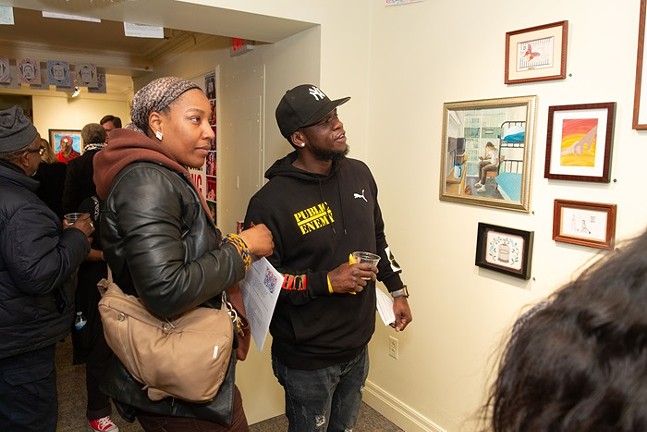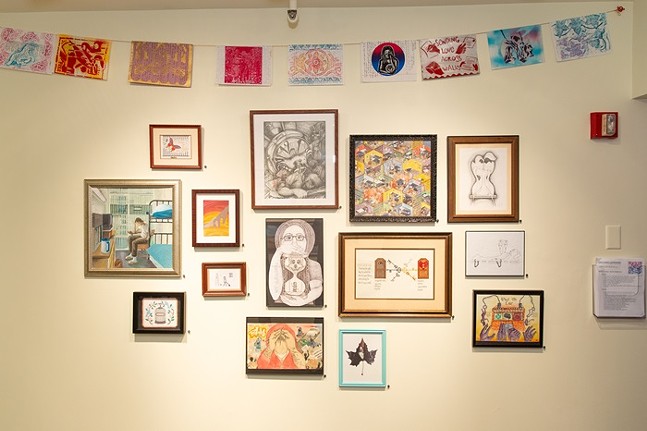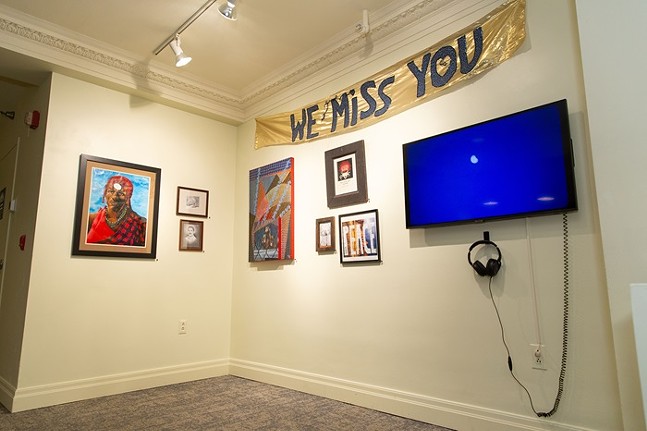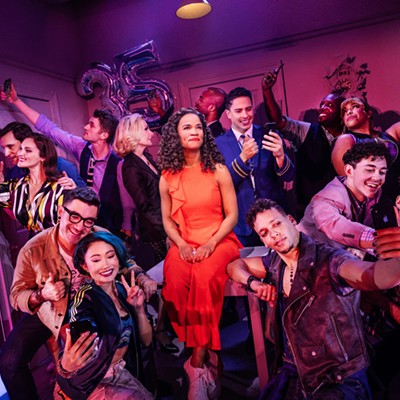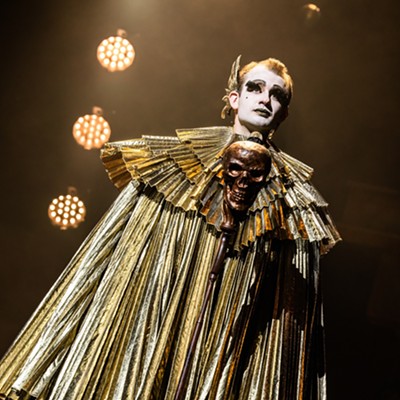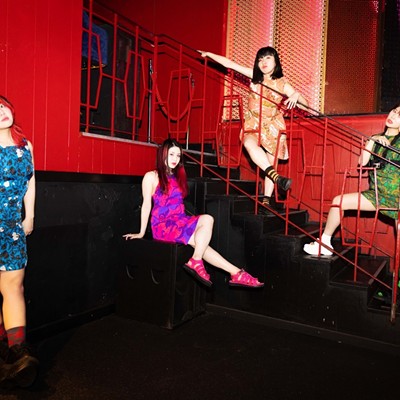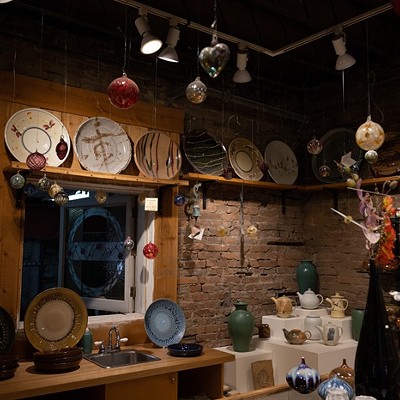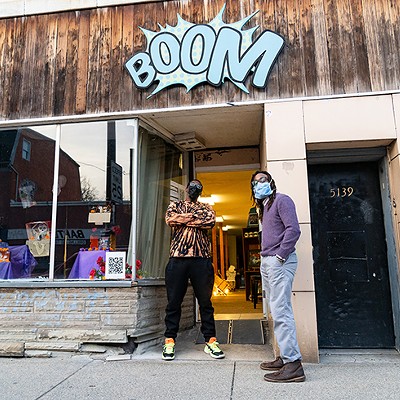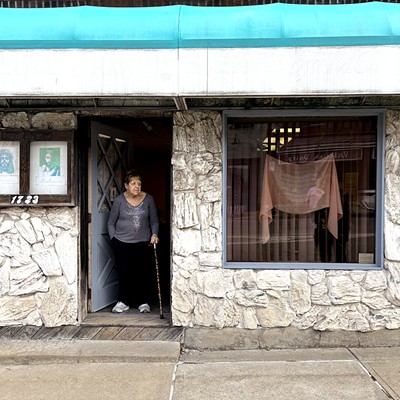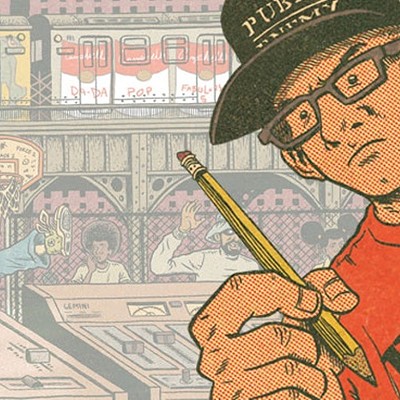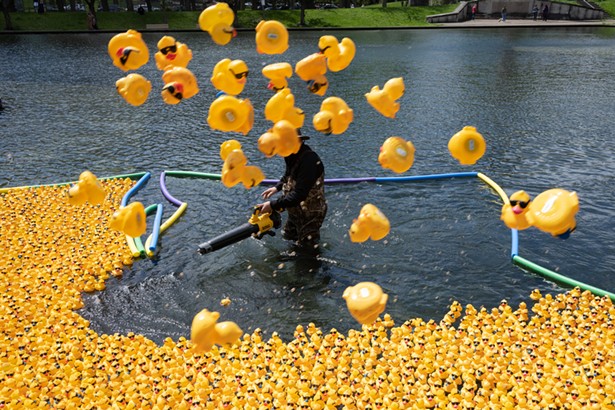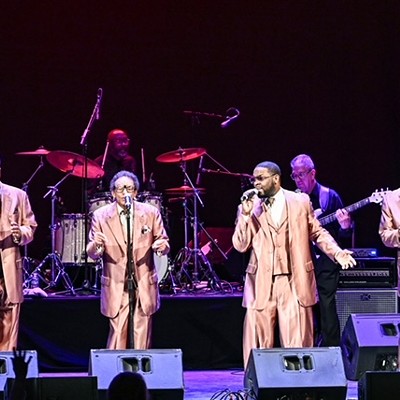Incarcerated artists convey toll of life sentences with Kelly Strayhorn Theater show
In Darrell Van Mastrigt’s “Still Hoping,” locs fall across a man’s forehead, framing one brown eye that demands your attention. The man is curled under a blanket, soft around his scrunched-up shoulder and over the hand on which he rests his cheek. His look — right at you, you can’t avert your gaze for long — is vulnerable, pleading. What he’s about to say to you, what he just said, seems likely to have been intimate and not much louder than a whisper.
The acrylic piece is one of approximately 20 at Kelly Strayhorn Theater’s latest exhibit Abolitionist Expressions, curated by Let’s Get Free. The Pittsburgh-based organization works toward bringing incarcerated people back into their communities and overhauling the larger carceral culture toward one of transformative justice.
Abolitionist Expressions debuts part of the group’s new permanent collection — as a whole, it totals 47 pieces that include drawings, paintings, cross-stitch, and videos, among other mediums — by currently and formerly incarcerated individuals. The exhibit in the theater’s lobby gallery runs through June 8 and is open to the public one hour before and during all KST Presents events.
There’s a pervasive loneliness in the exhibit, whether explicit or implicit. In Benji Hill’s untitled pencil drawing, a man sits inside a two-walled cell in a camping chair, elbows on knees, with "D. O. C." printed on the back of his shirt. The wall catty-corner from him breaks off into a countryside landscape. The long grass of a field grows into the cell and, in the distance, pine trees line the base of a mountain. The field has a worn, narrow path down the middle that stops as abruptly as the cell wall.
Hill’s potential freedom is nowhere to be seen in Shonda Walter’s “An Untimely Death.” The pen-on-manilla folder drawing depicts a woman trapped inside an hourglass, sand falling from a skull above her and covering her to her knees. Chains link the top and the bottom of the hourglass on its outside. About the piece, Walter wrote, “This is what I’ve felt like my 17 years in prison. I survived death row to still be crushed by the sands of time of a life sentence without parole.”
Mark Loughney’s “Bubblewrap Lockdown” is jarring in its loudness compared to the Walter’s and Hill’s pieces. Inside 42 brightly colored, polka-dotted rectangles are 42 black-and-white-striped cocoon shapes with dots for eyes. They are theoretically as isolated as the figure in Hill’s piece, but the visual busyness makes them seem less so.
etta cetera, an advisory board member for Let’s Get Free, says the organization seeks “to abolish this very excessive and punitive sentence of be in prison till you die."
"Essentially, that’s what life sentences are in Pennsylvania; we call it ‘death by incarceration,’” she adds.
Videos in the exhibit feature women who are serving life sentences. Some speak directly to youth about their pasts, others about who they are today. cetera says it’s difficult to film incarcerated people given the bureaucracy surrounding them, so these videos are notable in and of themselves.
Concerning content, cetera says, “If you were to see and meet these people, who we have vilified as the worst of the worst, you would actually see that they’re just regular people who are more than the worst thing that they’ve ever done.”
Other Abolitionist Expressions pieces showcase a range of skill levels and highlight the kinds of supplies made available to incarcerated artists, from pieces made with instant coffee given to those in solitary confinement to crochet needles and yarn. cetera says that the permanent collection also reflects that, in general, women have access to fewer materials than men.
Let’s Get Free acquires artwork through the network they’ve established, as well as pieces they’ve come across in other shows.
Shows initially started as a way to reduce the amount of art collecting in cetera’s house and as a way to fundraise through auctioning the pieces. They’ve also used the work in spaces where they hold community organizing events.
“It really changes the vibe to be surrounded by art and that much energy and creativity,” says cetera.
With Abolitionist Expressions, Let’s Get Free shifted from fundraising to “raising participation and awareness.” In addition to the emotional connections created through art, attendees can sign up to visit incarcerated people and explore other opportunities to get involved in the abolitionist movement.
Another member of Let’s Get Free, Omid Shekari, an Iranian artist who teaches at the University of Pittsburgh, says, “The whole beauty of this program is about community” and coming together toward turning “a culture of punishment [to] a culture of care and love. And that is possible.”
Let's Get Free presents Abolitionist Expressions. Continues through June 8. Kelly Strayhorn Theater. 5941 Penn Ave., East Liberty. Free. kelly-strayhorn.org
The acrylic piece is one of approximately 20 at Kelly Strayhorn Theater’s latest exhibit Abolitionist Expressions, curated by Let’s Get Free. The Pittsburgh-based organization works toward bringing incarcerated people back into their communities and overhauling the larger carceral culture toward one of transformative justice.
Abolitionist Expressions debuts part of the group’s new permanent collection — as a whole, it totals 47 pieces that include drawings, paintings, cross-stitch, and videos, among other mediums — by currently and formerly incarcerated individuals. The exhibit in the theater’s lobby gallery runs through June 8 and is open to the public one hour before and during all KST Presents events.
There’s a pervasive loneliness in the exhibit, whether explicit or implicit. In Benji Hill’s untitled pencil drawing, a man sits inside a two-walled cell in a camping chair, elbows on knees, with "D. O. C." printed on the back of his shirt. The wall catty-corner from him breaks off into a countryside landscape. The long grass of a field grows into the cell and, in the distance, pine trees line the base of a mountain. The field has a worn, narrow path down the middle that stops as abruptly as the cell wall.
Hill’s potential freedom is nowhere to be seen in Shonda Walter’s “An Untimely Death.” The pen-on-manilla folder drawing depicts a woman trapped inside an hourglass, sand falling from a skull above her and covering her to her knees. Chains link the top and the bottom of the hourglass on its outside. About the piece, Walter wrote, “This is what I’ve felt like my 17 years in prison. I survived death row to still be crushed by the sands of time of a life sentence without parole.”
Mark Loughney’s “Bubblewrap Lockdown” is jarring in its loudness compared to the Walter’s and Hill’s pieces. Inside 42 brightly colored, polka-dotted rectangles are 42 black-and-white-striped cocoon shapes with dots for eyes. They are theoretically as isolated as the figure in Hill’s piece, but the visual busyness makes them seem less so.
etta cetera, an advisory board member for Let’s Get Free, says the organization seeks “to abolish this very excessive and punitive sentence of be in prison till you die."
"Essentially, that’s what life sentences are in Pennsylvania; we call it ‘death by incarceration,’” she adds.
Videos in the exhibit feature women who are serving life sentences. Some speak directly to youth about their pasts, others about who they are today. cetera says it’s difficult to film incarcerated people given the bureaucracy surrounding them, so these videos are notable in and of themselves.
Concerning content, cetera says, “If you were to see and meet these people, who we have vilified as the worst of the worst, you would actually see that they’re just regular people who are more than the worst thing that they’ve ever done.”
Other Abolitionist Expressions pieces showcase a range of skill levels and highlight the kinds of supplies made available to incarcerated artists, from pieces made with instant coffee given to those in solitary confinement to crochet needles and yarn. cetera says that the permanent collection also reflects that, in general, women have access to fewer materials than men.
Let’s Get Free acquires artwork through the network they’ve established, as well as pieces they’ve come across in other shows.
Shows initially started as a way to reduce the amount of art collecting in cetera’s house and as a way to fundraise through auctioning the pieces. They’ve also used the work in spaces where they hold community organizing events.
“It really changes the vibe to be surrounded by art and that much energy and creativity,” says cetera.
With Abolitionist Expressions, Let’s Get Free shifted from fundraising to “raising participation and awareness.” In addition to the emotional connections created through art, attendees can sign up to visit incarcerated people and explore other opportunities to get involved in the abolitionist movement.
Another member of Let’s Get Free, Omid Shekari, an Iranian artist who teaches at the University of Pittsburgh, says, “The whole beauty of this program is about community” and coming together toward turning “a culture of punishment [to] a culture of care and love. And that is possible.”
Let's Get Free presents Abolitionist Expressions. Continues through June 8. Kelly Strayhorn Theater. 5941 Penn Ave., East Liberty. Free. kelly-strayhorn.org

